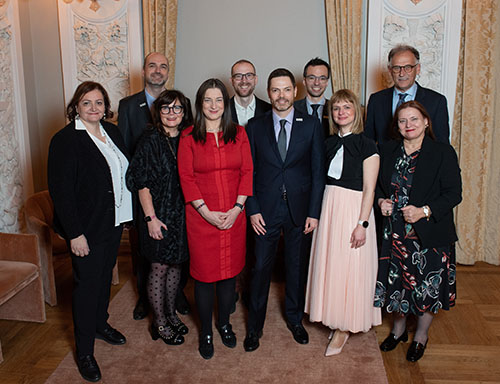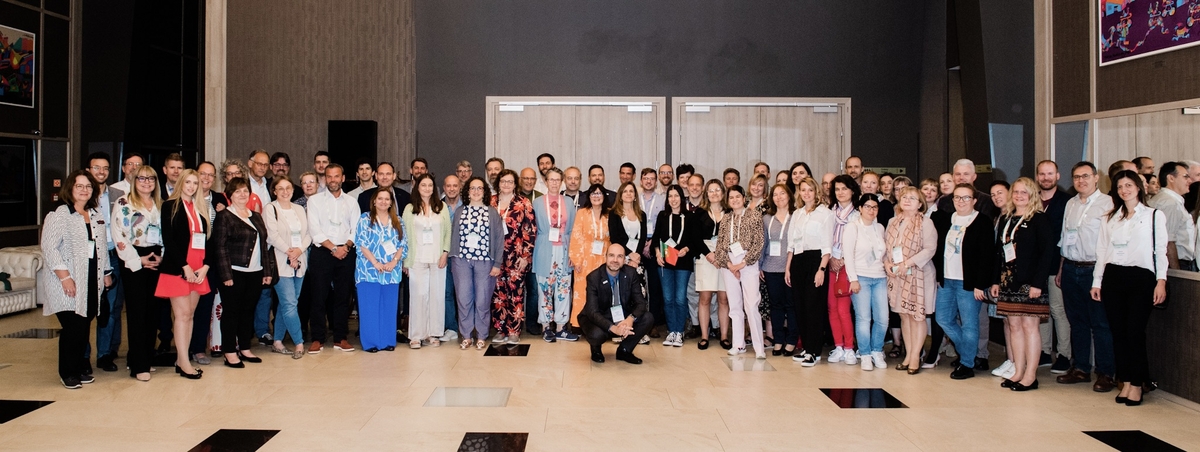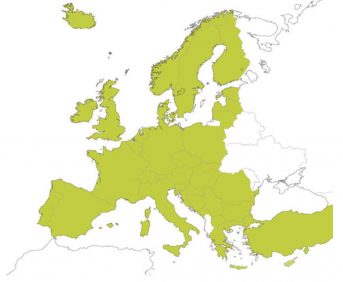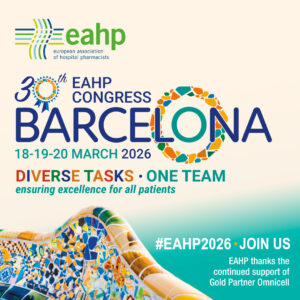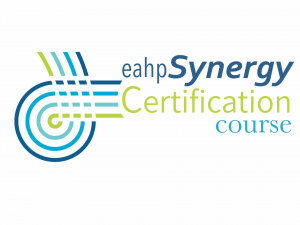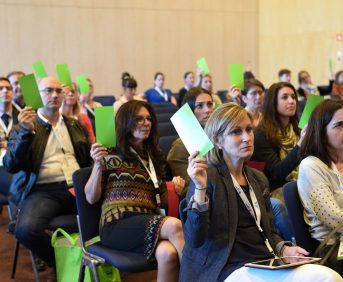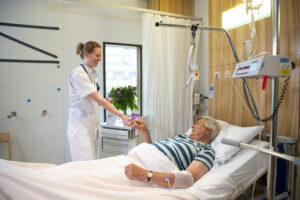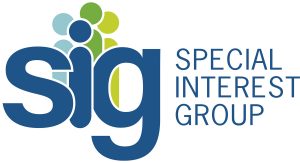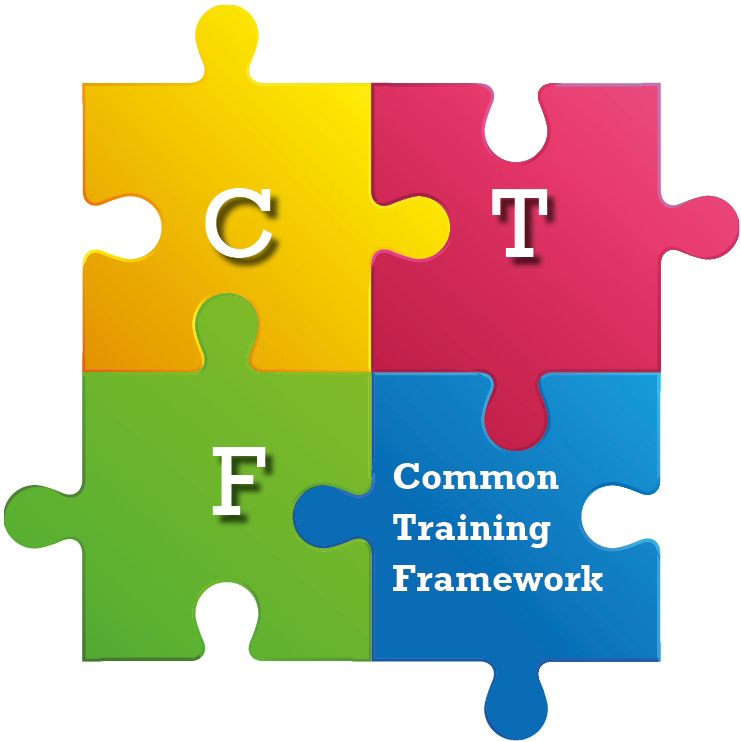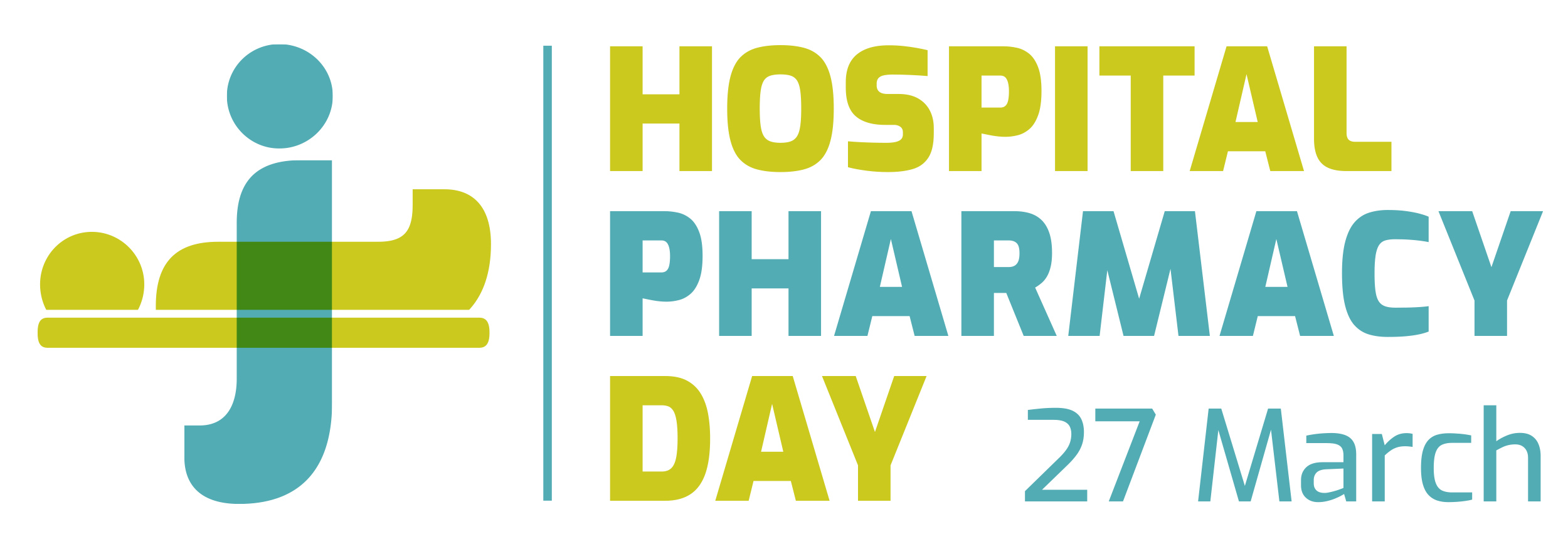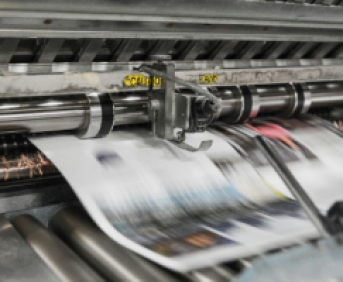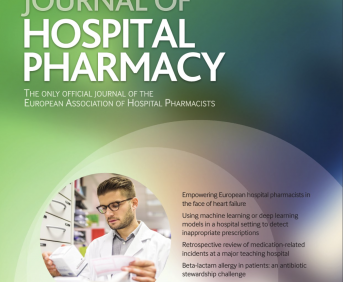EXPANDING OPPORTUNITIES FOR PHARMACISTS IN ONCO-HEMATOLOGIC CLINICAL TRIALS: DESIGN AND IMPLEMENTATION OF THE OUTPATIENT SERVICE MODEL
European Statement
Clinical Pharmacy Services
Author(s)
Eugenia Serramontmany Morante, Patricia Garcia Ortega, Lorena Garcia Basas, Pablo Latorre Garcia, Pilar Rovira Torres, Laura Maños Pujol, Isabel Cidoncha Muñoz, M. Queralt Gorgas Torner
Why was it done?
The provision of outpatient oncology services by pharmacists is still limited, but it is an emerging role. It can add value while increasing the quality of patient care required, maximizing the likelihood of achieving positive outcomes and thus improving the patient’s quality of life. It is important to incorporate clinical pharmacists into outpatient clinics to ensure the safe use of investigational drugs and guarantee the best treatment for the patient.
What was done?
The oncology clinical trials pharmacy team initiated an outpatient clinic at a tertiary hospital. This enabled review of patients’ medications, monitoring of interactions, appropriate oral chemotherapy counseling, design of medication diaries and instructions, discussion of side effects, as well as other dietary and daily living recommendations.
How was it done?
A multidisciplinary team was formed: pharmacy, medical, nursing, ancillary and administrative staff, to discuss circuits and strategies to address outpatient pharmacy clinic.
The pharmaceutical care program was implemented gradually during 6 months, first in phase I, then phases II and III clinical trials.
Factors including appointment scheduling, patient prioritization, clinic room availability as well as detailed definition of pharmaceutical activity were discussed, in order to have a standard procedure for all patients included in a clinical trial.
The group continued to meet weekly to further discuss the progress of the pharmaceutical care program and any obstacles and unforeseen events.
What has been achieved?
Medication has been dispensed to 8447 patients in the outpatient pharmacy, of which 1172 patients have been attended by the clinical pharmacist during the first 8 months (January-August 2021) of the programme’s implementation.
Pharmaceutical care at the first day of treatment has been provided to 275 patients to explain how to take the treatment and resolve doubts. The concomitant medication of 312 patients has been reviewed for the screening and 425 telephone queries about concomitant medication have been resolved.
What next?
The evolutionary change in cancer care along with the increase in the number of clinical trials and its complexity will emphasize the need to include the oncology pharmacist in the cancer care team. The role of a clinical pharmacist is vital to ensure the safety and controlled use of the drug, ensuring the best possible outcomes.
ADAPTING CLINICAL PHARMACY SERVICE PROVISION TO THE EMERGENCY DEPARTMENT DURING THE COVID19 PANDEMIC
European Statement
Clinical Pharmacy Services
Author(s)
Dearbhla Murphy, Mariosa Kieran, Jennifer Brown
Why was it done?
The Emergency Department (ED) at our institution is one of the busiest in Ireland. In 2019, there over 84,000 attendances. The ED CPS is multifaceted and involves clinical review of prescribed drugs, consultation with medical and nursing colleagues to ensure safe, effective and rational prescribing, drug supply and Medicines Reconciliation (MR). In order to meet patient requirements during the COVID19 pandemic, the ED was re-configured. The departmental changes necessitated realignment of the CPS to ensure evolving institutional requirements were being met while maintaining service provision.
What was done?
• ED Stock lists were reviewed and modified to ensure prompt availability of COVID19 treatments.
• Drug lists were devised for new ED zones to ensure availability of emergency and antidote medicines on a 24/7 basis.
• ED requirements for COVID critical medicines e.g. neuromuscular blockers, propofol, midazolam and antivirals were implemented in response to emerging evidence.
• Appropriate drug and fluid storage locations were reviewed in line with legislative requirements.
• Pharmacy technician top-ups were modified and standing orders introduced.
• Technician staff received Personal Protective Equipment (PPE) training to facilitate topping-up of drug presses in high-risk patient-facing areas.
• Access to critical care and COVID19 Respiratory Infection treatment protocols was expanded to ensure point of care access
• All associated SOPs were updated
• CPS provision was reviewed, changes introduced include:
1. fixed zone staffing allocations to reduce cross-contamination of staff
2. guidance on Infection Prevention and Control measures for completing MR patient interviews
3. electronic transfer of Clinical Pharmacist handover to ward based pharmacists
How was it done?
• A multidisciplinary team (MDT) of stakeholders was formed of Nursing Management, ED Consultants and the Pharmacy Department.
• The ED pharmacist coordinated the Pharmacy review.
• The procedures and policies governing CPS provision and ED drug stock holdings, storage and availability were reviewed and adapted.
• The MDT supported roll out of the changes in practice through communication and staff training.
What has been achieved?
Continuity of the CPS provision to the ED during COVID19 pandemic was ensured.
What next?
Through this review, the multidisciplinary ED team collaborated to successfully review CPS provision to adapt for the unique and evolving clinical needs of patients during the COVID19 pandemic. This ensured the safe delivery of a high quality CPS and continuity of drug supply.
ncrease in the prescription of Benzodiazepines in the context of the SARS COV 2 pandemic.
European Statement
Clinical Pharmacy Services
Author(s)
Elena Elvira Ladrón de Guevara, Belen Sanchez Rodriguez, Misael Rodriguez Goicoechea, Marina Sanchez Valera, Diego Gámez Torres, Francisca Verdejo Reche, Inmaculada Alférez García
Why was it done?
The main aim of this study is to find out the prescriptions of benzodiazepine derivatives from 2018 to 2021 in the context of the SARS COV 2 pandemic and the variation in them. As a secondary objective, we will learn which benzodiazepine derivatives varied more.
What was done?
The most frequently recorded mental health problem is anxiety disorder and in the context of the SARS COV 2 pandemic, where an increase in anxiety cases has been evidenced, benzodiazepine derivatives (N05BA) have been one of the most prescribed pharmacological groups in most developed countries for this problem. Although its short-term benefits have been demonstrated, increasing its consumption may have long-term risks.
How was it done?
Retrospective, observational and cross-sectional study. The study period includes June 2018, June 2019, June 2020 and June 2021. The study population includes the 710.581 inhabitants associated with the prescribing doctors of benzodiazepine derivatives, from the study province.
What has been achieved?
N = 710,581, 21.61% (153,574) with a benzodiazepine prescription, 67.33% (103,416) women, between June 2018-June 2021. The prescribed benzodiazepine derivatives: alprazolam, Diazepam, diazepam / priridoxine, clotiazepam, lorazepam, ketazolam, clobazam, pinazepam, clorazepatodipotassium, bromazepam, bentazepam, diazepam / sulpiride, diazepam / sulpiride / pyridoxine.
June 2018: 35,800 prescriptions, 67’30% (24,085) women, June 2019: 37,601, 67.20% (25,262) women, June 2020: 39,547, 67.30% (26,622) women and June 2021: 40,626, 67, 60% (27,477) women.
From June 2018 to June 2019 prescriptions increased 5.03% (1,801), from June 2019 to June 2020 they increased 5.20% (1,946), from June 2020 to June 2021 they increased 2.73% ( 1,079), which represented a 13.48% increase in prescriptions from June 2018 to June 2021 (4,826).
The largest prescription increases were diazepam + 23%, lorazepam + 18%, bromazepam + 12.5%, and alprazolam + 12.3%. The largest prescription decreases were clotiazepam and bentazepam -100%, pinazepam -96’43% and clobazazam -22’45%.
What next?
Currently, the consumption of benzodiazepine derivatives has been increasing due to an increase in stress and anxiety situations and, in the context of the SARS VOC 2 pandemic, we have seen a progressive increase of 13.48% (4,826 prescriptions) from June 2018 to June 2021, with women being the user of 67.33% of prescriptions on average. These data allow us to know the current situation of the prescription of benzodiazepine derivatives to the population and to focus on mental health both in the validation of treatments and in pharmaceutical care.
Improved drug management for surgical inpatients through the presence of a clinical pharmacist at the preoperative clinic
European Statement
Clinical Pharmacy Services
Author(s)
Françoise LONGTON, Olivia Polinard, Linda Mattar, Anna Pauels, Mireille Bourton, Michel Mattens
Why was it done?
A thorough medication history at admission reduces medication errors. The presence of a clinical pharmacist in the preoperative clinic increases the number of inpatients who receive a standardized medication history by a pharmacist.
On admission, the adaptation of home medications to the hospital formulary can also be a source of error or delay. The fact that the patient is seen by a pharmacist prior to hospitalization makes it possible to anticipate drug substitutions and possible orders for non-formulary drugs.
Moreover, surgeons do not always have the possibility to prescribe medications taken at home upon admission, which results in a delayed availability of the medication. Thanks to this multidisciplinary project the continuity of treatment is assured.
What was done?
During the preoperative consultation, a pharmacist takes a medication history and enters it into the computerized medical record, making it available for the anaesthetist.
Upon admission of the patient, the continuity of the medication is ensured by the pharmacy.
Indeed, during the admission, the nurse follows a procedure that informs the pharmacy of any medication changes since the preoperative consultation. Afterwards, the pharmacy encodes the treatment into the computerized intra-hospital prescription and delivers it to the department.
Before any drug administration, this treatment is signed by the doctor responsible for the patient.
How was it done?
Preoperative consultations had to be structured so that each patient was first seen by the pharmacist, second by a nurse and third by the anaesthetist.
Thus, the main obstacle was organizational and it was overcome through the centralized management of preoperative clinic appointments.
What has been achieved?
In 2020, 54% of patients admitted for surgery (elective or emergency surgeries) were seen in the preoperative clinic.
What next?
This is an example of good practice as it ensures a standardized medication history and admission management.
THE ROLE OF DNA SEQUENCING AND MOLECULAR TUMOR BOARD COUNSELING IN THE SELECTION OF THE MOST APPROPRIATED THERAPY IN ONCOLOGY
European Statement
Clinical Pharmacy Services
Author(s)
Marta Anghilieri, Vito Ladisa, Andrea Vingiani, Giancarlo Pruneri
Why was it done?
The new DNA sequencing techniques, globally defined “Next Generation Sequencing (NGS)”, allow parallel sequencing of many samples producing a big amount of data. To give a comprehensive analysis of the data in order to develop new specific and clinically useful therapies, we have introduced the approach to evaluate the data by the MTB, where pharmacists are included as experts of drugs and their preparation and application.
What was done?
The integration of pharmacists into the first Molecular Tumor Board (MTB), a multidisciplinary group, to select the most suitable therapy for oncological patients.
How was it done?
For every patient pharmacists, together with the members of MTB, study the results of NGS to identify known and unknown alterations utilizing a database available to all MTB members. These mutations represent the basic tool to select potential target therapies. The MTB meets weekly to discuss and integrate the alterations observed with the patient clinical history. At the end this approach allows to select the most suitable target therapy.
What has been achieved?
In this study 208 patients affected by No Small Cell Lung Cancer (NSCLC) were evaluated. The tumor has an elevated mortality, even if many target drug available or in development, therefore a correct treatment approach is essential to improve the clinical outcome. The NSG identified 117 altered genes. After an extensive literature search, 15 genes were identified as potential target of drugs available. They marked 116 patients potentially tractable with target therapy: 47 patients were candidate to a target therapy already in clinical practice and 69 to a target therapy not in clinical practice. Comparing the two groups, in the candidates to drugs in clinical practice the treatment was started in 65% of cases and in 53% was continued, while in the other group the treatment was started in 23% of cases and in 69% continued.
What next?
• The MTB offers a valid support in the clinical practice
• It individuates a target therapy for a greater number of patients
• The selected therapy has a bigger chance to last longer
• The inclusion of Pharmacist in MTB allow a more aware use and a better selection of drugs
Croatian hospital pharmacists managing earthquake(s) medical consequences during lockdown(s)
European Statement
Clinical Pharmacy Services
Author(s)
Mirna Momcilovic, Anita Simic, Petra Turcic
Why was it done?
Croatia was hit by 2 big earthquakes in 2020, both happened just right after 1st and 2nd lockdown due to high number of COVID-19 cases. Since most of the hospitals were strategically built on the hills, it was more destructive for them. It also hit a number of community pharmacies responsible for drugs supply to specific areas in the country. There was no electricity, no heating, no drugs supply, no fridge to store drugs, for days, so quick back-up plan was needed to provide minimal healthcare.
What was done?
Croatian hospital pharmacists organised a temporary pharmacy in a tent, filled it with drugs and medical products donated from community pharmacies, hospitals and wholesalers from Croatia and other European countries and started supplying patients with it.
How was it done?
It was modified way of dispensing, without prescription because there was no doctors and no place to prescribe it, based on patient’s medical documentation, if available, and patient’s medication history according to what patient said only. Pharmacists needed to use their knowledge about dosing, duration of action – difference between immediate release or modified release formulations, possibility of splitting tablets into equal parts to get the needed dose and, most important, substituting drugs from the same pharmacologic class (ex. switching from one inhaler for treatment of asthma containing ICS + LABA to another one that was available at the moment), taking into consideration patient’s needs and avoiding drug to drug interactions. Pharmacists provided patients with OTC drugs, free of charge, followed by an advice of how to use it. Non having prescription problem was solved afterwards by Croatian Health Insurance Fund. Also, all the supply of vaccine against COVID-19 available in Croatia at that point, was sent to an area hit by the earthquake. Vaccination was done by doctors, and pharmacists assisted by supplying them with all the equipment needed (needles, alcohol, cotton wool, etc.).
What has been achieved?
Patients were supplied by all the drugs/medical products needed in the first, critical week after an earthquake.
What next?
Following the Croatian example of handling an earthquake situation, there is an idea of organising a medical crisis team, would include pharmacist, in each European country.
What role can French hospital Geriatric units play in vaccination coverage of the elderly?
European Statement
Clinical Pharmacy Services
Why was it done?
Vaccination coverage of the French elderly is low. Geriatricians asked for pharmacist’s help in increasing their patients’ vaccination rates.
What was done?
Pharmacist staff investigated the vaccination status of patients admitted to our Short-stay and Long-stay Geriatric Units (SSGU and LSGU). Results of these investigations enabled systematic catch-up vaccinations for patients before discharge.
How was it done?
Pharmacy and medical students were trained to determine SSGU and LSGU patients’ vaccination status and report findings to unit geriatricians. Training and procedures for Admission and Discharge Medication Reconciliation (AMR and DMR) were updated to include the recording of patients’ immunisation status. Furthermore, at discharge patients were supplied with an updated vaccination booklet and apprised of the importance of full vaccination coverage. During 2021, 3 groups were compared to evaluate our practices: before AMR new procedure, after AMR new procedure and after multidisciplinary decisions for AMR and DMR.
What has been achieved?
In SSGU and LSGU, all patient admission leads to an AMR. 45 patients were included in the first group, 39 in the second group and 46 in the final group. Since the 1st of March, AMR help geriatricians regarding vaccination status. Between March and April, 46% (17) of AMR found the entirety of the patient immunisation status compared to 2% (1) in the first group (p<0,01), and 35% (14) of AMR found at least one immunisation status among French recommendation compared to 24% (11) in the first group (p=0,12). In June, multidisciplinary medical team improved AMR et DMR practices to increase patient’s vaccination rates. In July, 51% (23) of all unit patients discharged had an up-to-date vaccination status compared to 2% (1) in the first group (p<0,01). 22 patients required pneumococcal vaccination: 8 received a dose during their stay and 2 had a dose prescribed at discharge. 27 patients required a Tetanus immunisation: 8 were vaccinated during their stay and 1 had a dose prescribed at discharge. Moreover, 46% (21) of patients received a short education from a pharmacist student and an up-date vaccination booklet. To conclude, 42,8% (15 of 35) of SSGU patients with incomplete vaccination coverage benefitted from catch-up vaccinations in July.
What next?
Vaccination coverage of eldery in not only a local public health preoccupation and systematic catch-up vaccination is easy to implement.
Case-study: Pharmaceutical teleconsultation using a mobile application
European Statement
Clinical Pharmacy Services
Author(s)
Joana Russo, Maria João Ribeiro, Humberto Gonçalves, Joana Ribeiro, Silva Cristina, António Gouveia
Why was it done?
In our country the oncology medication for ambulatory patients is dispensed by the hospital pharmacist (HP). Due to several aspects (i.e., COVID-19 pandemic) the process of distribution of said medication has changed in that the HP and the patient no longer meet face to face (Drive-thru systems, proximity projects in which the medication is sent to a nearby pharmacy of the patients living area). A tool was required that enabled the HPs to continue to monitor the relevant clinical aspects (patient education; medication adherence (MA), drug interactions (DI) and adverse events (AE) evaluation).
What was done?
We used a mobile application (App) to conduct the pharmaceutical evaluation of clinical aspects that need to be considered when dispensing oncology medication.
How was it done?
In collaboration with the Information Technologies department of our hospital, an App was developed. It integrates the patient’s hospital prescriptions and their answers to an adaptive query that identifies cases that need further clinical data We selected a specific drug (ibrutinib) and developed an algorithm that presented the extended questions accordingly. The App was announced to patients that required hospital medication and wanted to receive it through an alternative method of distribution.
What has been achieved?
In little over a year, a total of 1720 requests were received (668 patients). The algorithm was successful in differentiating patients whose evaluation needed to include additional clinical information. In 22 requests, further data was automatically gathered (9 patients) enabling us to evaluate MA, DI and AE. These teleconsultations do not require additional professionals (ie an assistant to register the request) nor a compatible time slot for a pharmacist-patient phone call.
What next?
The results showed that the concept of pharmaceutical teleconsultations through an App is viable and we intend to extend its range to other drugs and to dissociate the teleconsultation from the dispensing request. This approached also showed that proximity between HP and patients was positively affected allowing patients to consult their hospital pharmacist whenever they need to and wherever the patient was.
PLAN FOR IMPROVING THERAPEUTIC EQUIVALENCE IN A HOSPITAL GPI
European Statement
Clinical Pharmacy Services
Author(s)
LUCIA JIMENEZ-PICHARDO, INMACULADA LOMARES-MANZANO, LEONOR GOMEZ-SAYAGO
Why was it done?
Hospital with 118 beds in which all medication prescribed by the doctor that was not included in the pharmacotherapeutic guide was purchased through an external pharmacy. The proposed objective was to elaborate an improvement plan in therapeutic equivalence, with the development of a TEG
What was done?
Therapeutic Exchange Guidelines (TEG) are an intervention on the prescription according to a previously agreed protoco, in which the prescribed drug is subtituted for the one available in the hospital (because it is considered equivalent or because it is a better therapeutic option).
In this way, the most appropriate drug included in the Pharmacotherapeutic Guide (PG) of the hospital would be selected.
How was it done?
A work schedule was established distinguishing five phases: a) Elaboration Phase, which consists of consulting and review of the medical specialties included in the hospital, b) Presentation / approval phase by the Pharmacy Commission, c) Modifications Phase, d) Disclosure Phase, through a clinical session to the hospital’s internists and other hospital medicians and e) Implementation Phase. For its preparation, a manual was consulted for the writing of TEG, guides from other reference hospitals and different bibliography obtained from Pubmed, as well as the technical data sheet of each drug.
What has been achieved?
The TEG is prepared over a period of 3 months and was structured with the following sections:
Therapeutic group according to the ATC classification of drugs (351), Reference drug included in the PG (443 drugs), Medicines not included
(620) y Recommended therapeutic attitude: substitute the one available at the hospital (469) (specifying dose and regimen), continue (82) or suspend treatment (69).
Subsequently, it was presented to the Pharmacy Commission, the appropriate modifications were made and the final version was released through a clinical session before its publication through the hospital’s intranet.
What next?
The therapeutic equivalence improvement plans are considered efficient management strategies, applicable in all hospitals and health centers. It is a multidisciplinary and continuous process that will require periodic reviews.
Adequacy and effectiveness of thromboembolic prophylaxis in multiple myeloma patients treated with inmunomodulatory drugs.
European Statement
Clinical Pharmacy Services
Author(s)
Alba María Fernández Varela, Laura López Sandomingo, Nieves Valcarce Pardeiro, Isaura Rodríguez Penín
What has been achieved?
.
